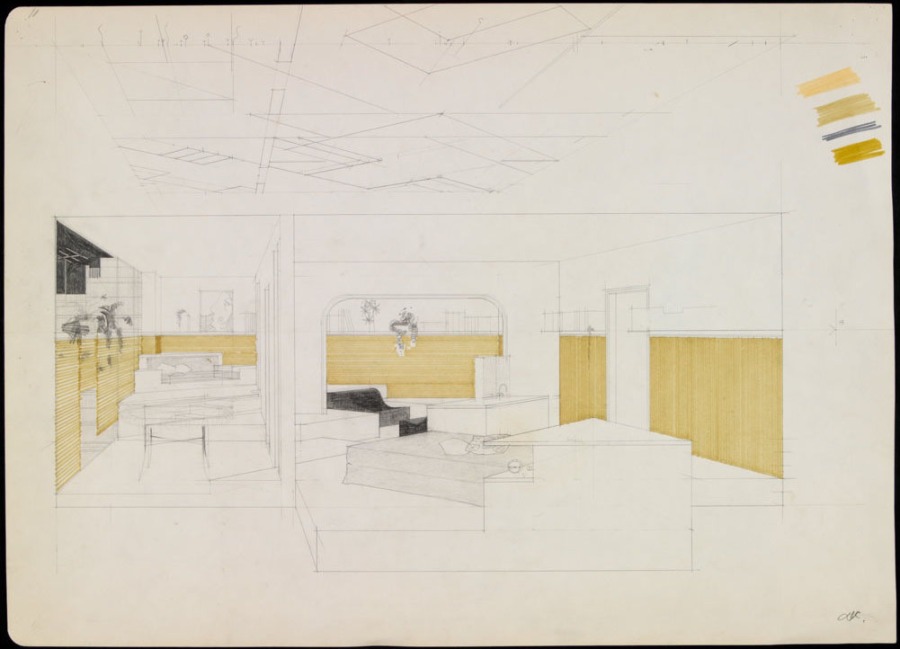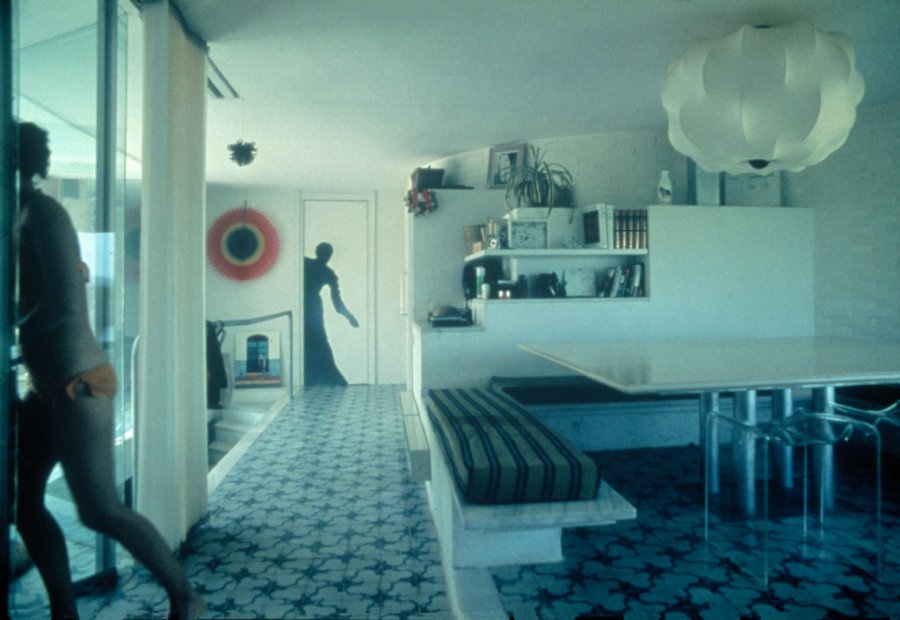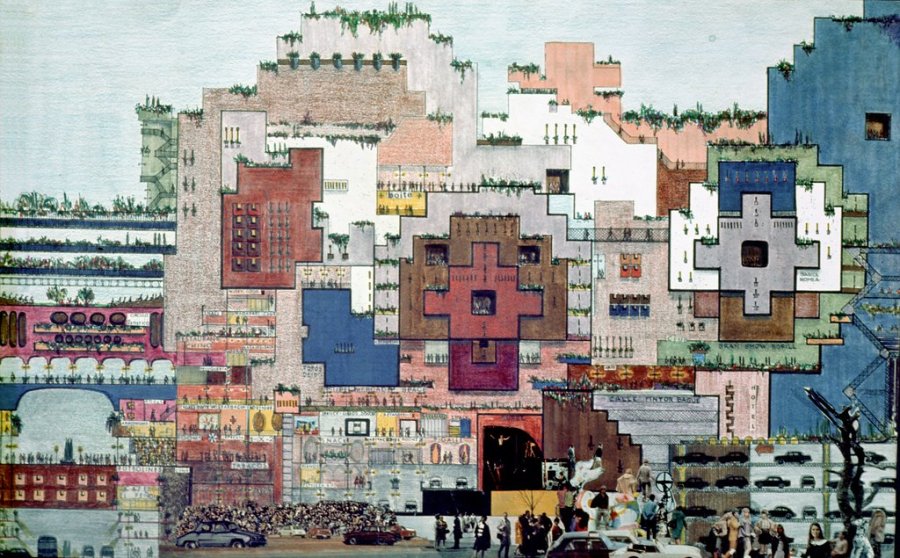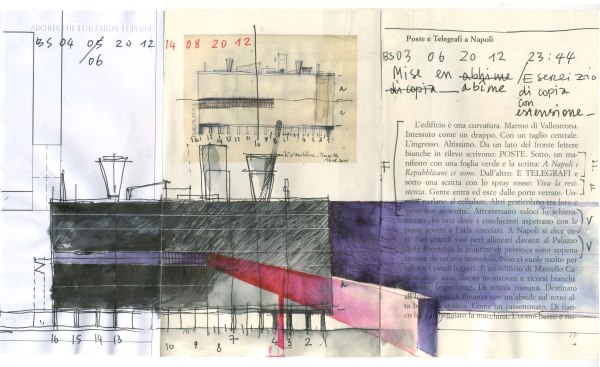Architectures without Place [diaporama]
 Construccions al bosc d’Olot by Josep Pujiula [1974]
Construccions al bosc d’Olot by Josep Pujiula [1974]As in the rest of Spain, Catalonian history is marked for the General Franco’s dictatorship from 1939 to 1975. The Franco era was characterised by repression of pro-democracy and left-wing organisations. In the middle of the repression, the post-war years led Catalonia to an economical growth which started in 1959 and, according to the Museo d’Història de Catalunya, “led [Catalonia] to major economic and social changes: foreign capital came into the country; industry diversified; tourism developed; waves of immigration from within Spain occurred; and the consumer society became established.“
Within this context, it is interesting to discover some of the projects presented on the exhibition and publication Architectures without Place, which analyzes a particular vision of architectural production in Catalonia since 1968. As if we were talking about other phantom city, the aim of the exhibition was to limit the study to architectures that do not physically exist but nonetheless help us to understand the present-day reality in all its complexity. As we can read on the exhibition web-site:
The great majority are ideal projects that never got off the architect’s drawing board. Others are projects that have changed as a result of being altered or demolished, or are ephemeral architecture projects conceived for a brief existence: among these, set designs form a group apart by virtue of their specific logic and clearly differentiated conditioning factors.
There are many facts to think about, as how any dictatorship affects architecture and culture in general terms or how the economical limitations have been the seed for creativity and multidisciplinarity on those years, when architectures were proposed or imagined by creative talents from other disciplines such as film, the visual arts and especially the comic.
 Modern Iconography. América Sánchez [1980]
Modern Iconography. América Sánchez [1980]Housing was not the exemption. While architects and artist were dreaming on a better and free world, the economic growth that started in those years has affected the architectural production, with the use of new materials and communication tools that allowed architects to know what was happening abroad in the architectural arena. Some historical facts such as the promulgation of the Stabilisation Plan [a plan to cut inflation and reduce the balance of payments] in July 1959, when the régime abandoned the despotic interventionist approach that it had maintained since 1939, had influenced the ideals of architects and creative minds that lived in Catalonia. Again from the Museo d’Història de Catalunya
This [economical] expansion took place without any type of urban planning nor the slightest degree of democratic control over the economy. Urban chaos and the lack of a basic infrastructure were common in the large cities and the tourist areas on the coast.
On those years, homes underwent major changes: New materials, such as chipboard and Formica, revolutionised furniture making. The flood of new domestic appliances continued unabated, and residents’ comfort was dramatically improved by electric fridges, washing machines, dishwashers, radios and televisions, as we can see in the following project:
 Reforma apartament Stéphanie. Lluís Clotet and Òscar Tusquets [Studio PER, 1974-79]
Reforma apartament Stéphanie. Lluís Clotet and Òscar Tusquets [Studio PER, 1974-79] Reforma apartament Stéphanie. Lluís Clotet and Òscar Tusquets [Studio PER, 1974-79]
Reforma apartament Stéphanie. Lluís Clotet and Òscar Tusquets [Studio PER, 1974-79]After this brief historical reflection, here is a [diaporama] with some architectures proposed or imagined in which the discussion about the city is carried out from a perspective that, remote from the particular servitudes of the architecture profession, often gives it a greater lucidity.
 Naus industrials Josep Ignasi Llorens and Alfons Soldevila [1980]
Naus industrials Josep Ignasi Llorens and Alfons Soldevila [1980] Infatables. Josep Ponsatí [1971]
Infatables. Josep Ponsatí [1971] Club de golf a Sant Cugat del Vallès. MBM Arquitectes [1970]
Club de golf a Sant Cugat del Vallès. MBM Arquitectes [1970] Carretera de les aigües. Emili Donato [1981]
Carretera de les aigües. Emili Donato [1981] City in Space. Ricardo Bofill, Taller de Arquitectura [1968]
City in Space. Ricardo Bofill, Taller de Arquitectura [1968]The exhibition was designed with a non-chronological narrative of events which aimed to offer a more reflective and multifaceted reading of the content, providing us with the elements for a debate on the role of architecture and its interaction with the socio-political context. General Franco died on 20 November 1975 and the opening up of the regime led to democracy by another route, political reform. In June 1977, the first free elections since 1936 were held. This socio-political changes drives us to reflect on the paradigm of the relationship between the architect and society.
We want to finish with the thought that architecture and architectural communication has often been related with activism in the political context, using image and media as political manifestos. As Beatriz Colominatold us in an interview, “you have to think that in the decade of the 1970s, the political agenda was almost part of our architectural curriculum.” And she adds:
I think that we are facing a very interesting era, because architecture always develops in a deeper way in moments of crisis. In the decade of the 60s and 70s, we had the oil crisis, the war, and other conflicts and we had the time to think about ecology, emergency housing, new materials, the space program, etc. And now that we are living in a similar state of the world, we can discover again some similar responses and recover the principles that we have lost.
Utopias as activism and polemical reaction, keep on going. In the current years, when Barcelona is facing a “star-architect-fever” on its architectural development, Beth Galí reflects this political and economical situation in Catalonia with her project La Sagrera Família [also included in the exhibition], a paper-architecture project aimed to condemn the mediatization of a monument like Gaudi’s Sagrada Familia:
 La Sagrera Família, Barcelona. Beth Galí [2000]
La Sagrera Família, Barcelona. Beth Galí [2000]But is it Architecture?* | Beniamino Servino


I’m an ephemeral and not too discontented citizen of a metropolis thought to be modern because all known taste has been avoided in the furnishing and exterior of houses as well as the city plan. Here you cannot point out a trace of a single monument to superstition. Morals and language are reduced to their simplest expression, in short! These millions not needing to know each other pursue their education, work, and old age so identically that the course of their lives must be several times shorter than absurd statistics allow this continent’s people. So, from my window, I see fresh spectres roaming through thick eternal fumes – our woodland shade, our summer night! – New Furies, before my cottage which is my homeland, my whole heart, since all here resembles this – Death without tears, our active daughter and servant, desperate Love and pretty Crime whimpering in the mud of the street.











